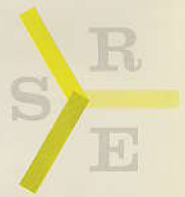 The Sodium Reactor Experiment, or SRE, was the first nuclear reactor in this country to supply commercially-available electricity. It powered the lights for the-then tiny town of Moorpark in Ventura County, California, population 1,200. The reactor is best known for suffering the worst meltdown in American history, releasing hundreds of times more radiation in the summer of 1959 than the more famous Three Mile Island disaster did twenty years later.
The Sodium Reactor Experiment, or SRE, was the first nuclear reactor in this country to supply commercially-available electricity. It powered the lights for the-then tiny town of Moorpark in Ventura County, California, population 1,200. The reactor is best known for suffering the worst meltdown in American history, releasing hundreds of times more radiation in the summer of 1959 than the more famous Three Mile Island disaster did twenty years later.
Our very first article on Rocketdyne describes the meltdown. It comes from a cover story in Los Angeles magazine entitled “HOT ZONE – Rocketdyne’s Simi Valley Field Laboratory was on the frontlines of the Cold War. Now some who lived near “The Hill” say they share two distinctions: chronic illness and the unswerving belief that the lab caused it.” Here’s an excerpt from the article:
 The handling of the incident is a telling example of the attitudes in the days of atomic energy’s infancy. On July 13, an experimental sodium-graphite reactor at the lab experienced a “power excursion” that caused its output to surge out of control. The reactor—part of an Atomic Energy Commission program to develop civilian nuclear-power sources—had been acting up for weeks, and the technicians moved swiftly to stop it.
The handling of the incident is a telling example of the attitudes in the days of atomic energy’s infancy. On July 13, an experimental sodium-graphite reactor at the lab experienced a “power excursion” that caused its output to surge out of control. The reactor—part of an Atomic Energy Commission program to develop civilian nuclear-power sources—had been acting up for weeks, and the technicians moved swiftly to stop it.
“They tried to scram the reactor,” says Hirsch, “meaning jamming the control rods in to shut it down—basically putting the brakes on. But the power was still going up even as the control rods were being pushed in. They managed in the end to shut it down, miraculously. About an hour and a half later, after being unable to determine what caused the excursion, they started the reactor up again.” An AEC report later stated that “continuing to run {the reactor} in the face of a known tetralin leak, repeated scrams, equipment failures, rising radioactive releases and unexplained transient releases is difficult to justify.”
 On July 26, the reactor again surged out of control, causing 13 of its 43 uranium fuel rods to rupture or melt. Radioactive gases spewed from the building. “It is incomprehensible to me that the radiation that was released stopped at the site boundary,” says Hirsch. “The meltdown occurred in a reactor that had no containment structure. When we think of reactors, we think of Diablo Canyon and San Onofre, with these huge concrete domes to protect against radioactivity being released. But the sodium-reactor experiment and all the other reactors that were on the property had no containment dome, so the radioactivity in the accident was released into the atmosphere and settled on the communities below the site. The question we cannot answer is how much that was and how much it affected people.”
On July 26, the reactor again surged out of control, causing 13 of its 43 uranium fuel rods to rupture or melt. Radioactive gases spewed from the building. “It is incomprehensible to me that the radiation that was released stopped at the site boundary,” says Hirsch. “The meltdown occurred in a reactor that had no containment structure. When we think of reactors, we think of Diablo Canyon and San Onofre, with these huge concrete domes to protect against radioactivity being released. But the sodium-reactor experiment and all the other reactors that were on the property had no containment dome, so the radioactivity in the accident was released into the atmosphere and settled on the communities below the site. The question we cannot answer is how much that was and how much it affected people.”
Over the course of the following year, radioactive xenon and krypton gases were released as technicians struggled to clean up the reactor. “The radiation monitors went off the scale during the accident, so we have a very poor idea of how much stuff got out,” says Physicians for Social Responsibility’s Parfrey. “The company says that 10,000 curies of radioactive iodine were re¬leased. Radioactive iodine may cause thyroid cancers in people who inhale or ingest it.”
The accident was not publicly acknowledged until five weeks later in an impenetrable AEC press release that stated “no re¬lease of radioactive materials to the plant or its environs occurred, and operating personnel were not exposed to harmful conditions.” In fact, at the time, it was one of the worst nuclear accidents in history. “[Rocketdyne] never really got around to telling the public that the core melted and that this was a very serious nuclear accident,” says Hirsch.
(Click thumbnail to view entire photograph)
25 Years of Award-Winning SSFL/Rocketdyne Reporting
1998 – 2023
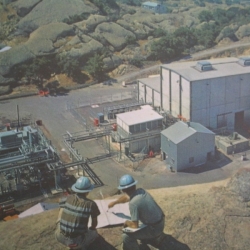
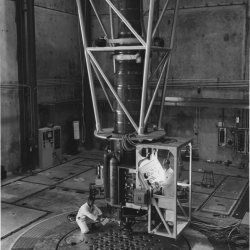
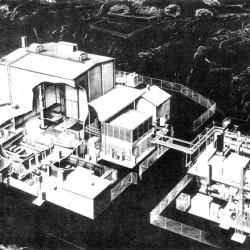
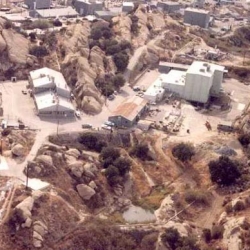
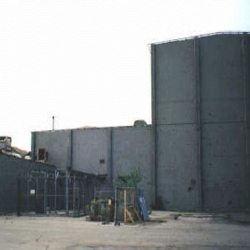
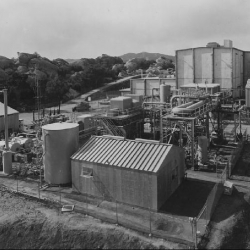
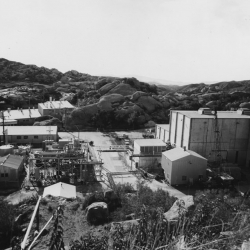
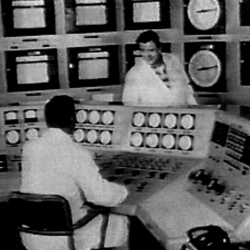
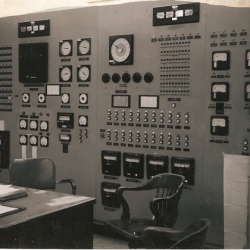
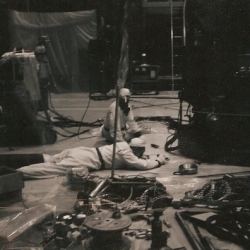
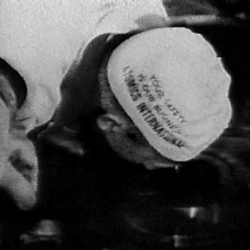
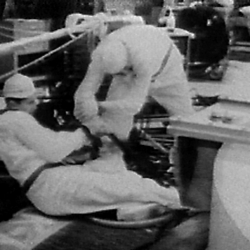












Recent Comments